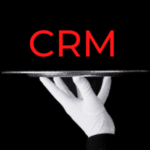Pipeline to Success: Firms Finally Embracing Business Development Technology

What gets measured gets done. This can certainly be said about “non-billable” activities in law firms. For anyone familiar with attorneys, this is not surprising. Busy lawyers are tasked with competing demands for their very valuable – and very limited – time. And for lawyers, time is money – literally. So, when there is client work to be done, anything that takes away from billing often ends up being put off until they have time – which sometimes means indefinitely.
But as competition for work has increased, law firms are finally being forced to focus on the one non-billable activity that makes all the other billable activities possible: business development. As a result, attorneys are learning that successful business development takes time. So, not surprisingly, they are searching for technology to make the process less time-consuming and more effective. One type of technology that can help enhance law firm business development efforts has actually been ubiquitous in other industries for years: the pipeline.
The Pipeline
At its most basic, a pipeline is simply a way to track and report on business development efforts. For years, as law firms began tracking business development opportunities, the tool of choice has been a spreadsheet. Even at some of the largest firms, lawyers often tend to gravitate to Excel to track just about everything. There are several reasons: it’s easy to use, conveniently located on the desktop and allows entry of almost unlimited information. Spreadsheets can even be used to print detailed lists and colorful charts and graphs. As a result, for many firms, spreadsheets were a good place to start building basic business development tracking pipelines.
The problem with spreadsheets, however, is that they have limitations. First off, they’re “flat.” Spreadsheets were designed for quick and easy entry of large amounts of basic, linear data such as contact or company names, dates or other key details, which are the basic building blocks of a pipeline. But because spreadsheets are flat, they don’t allow for ongoing tracking of important sequential or chronological historical information like the activities related to an opportunity or last steps and next steps. This type of information can be incredibly important when trying to move opportunities forward or determine the best process for bringing in business.
This is where real pipeline software can help to take a firm’s business development to the next level. A true sales pipeline allows opportunities to be entered and linked to related people and companies. Pipelines also allow for entry of additional information such as activities related to an opportunity, which can then be assigned to the individuals who need to complete them. Once all the data is entered, a pipeline can also provide a perpetual history of the activities that took place during the business development cycle and reminders for next steps to keep advancing the opportunities forward.
Sophisticated pipelines can also help to predict deal outcomes and project expected revenue. They can even be used to create dashboards and generate reports. By utilizing these types of analytics, lawyers can identify which opportunities may have become stalled or inactive and which ones may be “low hanging fruit,” the opportunities that are most likely to yield the best results with the least effort.
Most importantly, pipelines provide a good way to hold attorneys accountable for developing business. Many firms have found that pipeline activity and progress reports can be effective tools to improve results and foster a bit of healthy competition within or among practices.
The Past
Some larger firms with sophisticated marketing departments began to realize the limitations of spreadsheets years ago and started looking for alternatives. But because the profession had not been focused on advanced business development tracking in the past, there were not many choices of pipeline software available that could meet the specific needs of law firms.
So, as an interim solution, some firms started testing software from vendors outside of the legal industry to help overcome the limitations of spreadsheets. While these CRM systems included advanced pipeline functionality, unfortunately they didn’t make sense for a firmwide deployment. Even though these tools are commonly used for contact management in most other industries, because they are web-based, can be extremely expensive and are hosted in the cloud rather than inside a firm’s firewall, many firms or attorneys wouldn’t embrace them in the past
However, some firms have deployed a few licenses for this type of pipeline software to BD or Marketing teams who can then work with key lawyers or practices. To support the attorneys, they are often tasked with entering the data and generating relevant business development reports. But because the systems are not readily accessible to all the lawyers, many of the key business development contacts remain where they have always been – on marketing lists or in an attorney’s Outlook, rendering these pipelines just one more “silo” of disconnected data.
The Products
All this is changing, however. Recently, some CRM developers have begun building pipeline tools to meet the changing needs of law firms. The advantage of these pipelines is that they are tied to existing CRM systems that do make sense to deploy firm-wide, allowing attorneys’ contacts to flow in with very little effort, time or training required. This allows a firm to better leverage relationships and turn them into opportunities and, ultimately, new Clients.
While it’s great that firms are finally focusing on business development tracking and that new pipeline software for law firms is being developed, it’s also important to make sure that we don’t forget the fundamentals of successful business development as we move forward, and that we don’t run into past problems.
The Problems
Over the years, we have all heard way too many stories of CRM systems failing to meet expectations. What we don’t typically hear is that the reason why these systems didn’t meet expectations was typically that the expectations were unrealistic.
Indeed, people have been complaining about CRM systems for as long as… well, as long as there have been CRM systems (and these complaints are not just being echoed within law firms.) The main problem with CRM technology is that it’s just technology. It’s not a magic bullet. Lawyers shouldn’t expect that purchasing some shiny new software is going to solve all of their business development challenges. The software has to be implemented strategically, meaning that firms also have to focus on the people and processes that can make it or break it.
The People
To ensure success, first, the pipeline technology must be supported at the highest leadership levels. Next, there have to be knowledgeable, well-trained people dedicated to inputting the data. Information has to be entered correctly, consistently and completely because bad data will not inspire attorney adoption. Additionally, resources have to be dedicated to ongoing data quality to ensure information remains current over time, since up to 30% of a firm’s contact data can become outdated each year. Finally, there has to be a focus on system use by key stakeholders. To accomplish this, lawyers not only have to understand the value of the software for the firm, but they must also believe that there is something in it for them. Only then will firms be able to get the wide-spread system use and value that will allow them to realize returns on their investments in pipeline technology.
The Process
A business development pipeline is as much a process as it is a system. As such, it’s important to spend time thinking through the right format and fields of information for your pipeline. Think about the types of information you want to track and report on, such as:
- Date of entry
- Opportunity name
- Description / type of work
- Associated practice
- Associated attorneys
- Associated office
- Key contacts
- Stages
- Estimated value / dollar amount
- Associated tasks or activities
- Next steps / last steps
- Reminders for follow up
- Probability of success
- Outcome
- Additional custom fields
In working together with hundreds of firms on CRM and pipeline projects, we often recommend that spending time up front to think through the reports and analytics you may want in the future can be beneficial. It’s also helpful to involve a number of key stakeholders in the process of setting up the pipeline so they will be more likely to buy into its use.
Return on Pipeline Investments
While there is little doubt that pipeline software can be beneficial for enhancing law firm growth, it’s also important to remember that if lawyers don’t continuously work on “filling up” the pipeline by regularly spending time having business development conversations and/or meetings with clients and prospects, the value of the software won’t be recognized. But that’s an article for another day.
For more than 15 years, the team at CLIENTSFirst Consulting has been helping professional services firms and other organizations successfully select and implement CRM and pipeline systems to maximize value, adoption and return on investment. If you need help achieving CRM Success, please contact us at 404-249-9914 or Info@ClientsFirstConsulting.com.







